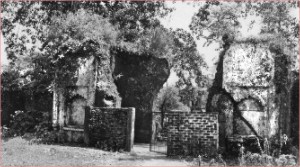Journey through Bangldesh
From Sylhet
Jaintapur: Full of history, yet full of neglect Iqbal Siddiquee
 Pan, Pani Nari- Ei tiney Jaintapuri- Betel, water and women, these three make Jaintapuri. That's the first line of a rhyme that has become something of a catchphrase among Sylhetis to describe Jaintapur, a historically rich upazila of Sylhet. Pan, Pani Nari- Ei tiney Jaintapuri- Betel, water and women, these three make Jaintapuri. That's the first line of a rhyme that has become something of a catchphrase among Sylhetis to describe Jaintapur, a historically rich upazila of Sylhet.
Geographically, Jaintapur is attached to the Indian state of Meghalaya on the north, Kanaighat and Golapganj upazilas on the south, Kanaighat on the east, Gowainghat and Sylhet Sadar on the west. The present Jaintapur upazila is located at the foot of the Jaintia hills and is about 40 kilometres to the north of the Sylhet city. There are a good number of hills, hillocks and valleys in the northern and eastern parts of the region while its western and southern parts are covered with many haors (low lying areas which flood in the monsoon) used for fishing and Boro paddy cultivation. A long time ago, the present plain land was probably under water and part of a huge water body, which might have separated Jaintapur from Sylhet, historians say. Because of this geophysical condition, the region remained independent for a long time and was known as the Jaintia Kingdom. Jaintia was a hill kingdom of ancient Assam. In the sixteenth century, most of the greater Sylhet region was under the jurisdiction of Jaintia king who ruled from the capital Jaintapur. The inhabiting Khashia people (ethnic group) had a matriarchal society and its own language. Sometime around 1500, the then king Parbat Roy adopted his Sanskrit name. The king of Cooch Bihar conquered Jaintia sometime between 1548 and 1564. Late that century, the Jaintia kingdom was governed under the kingdom of Cachhar Raja. The Jaintia kingdom regained independence in 1605 with the help of Ahom Raja. Lakshmi Narayan was a strong king (1669-1697) who was famous for the construction of buildings using bricks at his capital at Jaintapur. The British East India Company drove the Jaintia king from the plains of Sylhet in1765. The kingdom lost its independence when the Burmese conquered Assam in 1824. Again the British drove the Burmese away while the kingdom's independence was restored in 1825. To facilitate their trade of limestone and canes in Sylhet, the East India Company annexed the Jaintia kingdom to their Bengal state in 1935.
According to the local legends and folk tales, from the seventh or eighth
century, the Jaintapur kingdom came under the control of the Kamrup Kingdom and later the same year under the control Chandra and Varman rulers. After the fall of Varmans, the kingdom again went under the rule of the Deva dynasty for some time. Jayanta Roy, the last ruler of the Deva dynasty had a daughter named Joyonti, who was married to a son of Khashi chief-Landowar. Because of this marriage, the kingdom came under the ruling of the Khashis in around 1500. It remained as an independent kingdom under the Khashis till 1824.
There are still plenty of visitor attractions at the remains of Jaintapur, which include the temple of Jainteswari, the Rajbari (palace) and the monuments. These remnants, however, are now quite dilapidated. The palace built by the King Lakshmi Sinha (1670-1701) in 1680 is ruined. The main structure of the temple has also been heavily damaged. However, the temple area has a boundary wall now. Some of the ancient monuments at Jaintapur are sites of tremendous historical interest. The lone megalithic remains discovered so far in Bangladesh are located in Jaintapur. They are similar to the ones discovered in India.
There are 42 structures around the Jainteswari temple area (located very close to the Jaintapur bus stand). Among them, nineteen megaliths can be seen by the side of the temple. There are eight structures near the Jaintapur Shahid Minar area while there are many others in broken pieces. Five stand at the southern side of the Sylhet-Tamabil Road.
There are seven other structures at a place about one and a half kilometers off the Jainteswari temple and near the northern side of the Nayagang River.
Many of the remains here had been either taken away or damaged callously during the last 50 years, due to absence of arrangement for preservation, a number of local elderly people said. Moreover, there are four structures at a Khashi village, about a kilometer from the Jainteswari temple.
The conditions for the preservation of these historical remains at Jaintapur are not good enough. The Department of Archeology has just finished its responsibility of putting up some hoardings. However, more remains to be done.
Copyright
(R) thedailystar.net 2007 |
|
